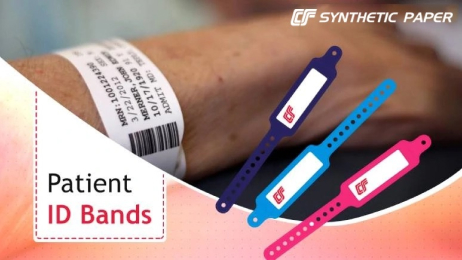The Development of the Patient Identification Band in Healthcare Facilities
The Development of the Patient Identification Band in Healthcare Facilities
Blog Article
Exploring the Various Sorts Of Patient Identification Band Used in Clinical Facilities
In the complex globe of healthcare, the critical function of Patient Identification bands often goes unnoticed. These bands, varying from simple paper wristbands to advanced RFID bands, create the foundation of Patient safety and security protocols, making certain precision in Patient Identification.
Understanding the Relevance of Patient Identification Bands
While they might appear like mere devices, Patient Identification bands play a vital role in medical facilities. These bands serve as an essential tool for confirming Patient identification, avoiding medical mistakes related to misidentification. Patient Identification bands also help in improving administrative jobs, guaranteeing precise record-keeping and invoicing.
Standard Paper Wristbands: Their Usage and Limitations
Traditional paper wristbands have actually been a staple in Patient Identification across different medical facilities. While their use prevails, they nurture specific limitations that may impact their performance in Patient management. This section will certainly focus on the extent of their application and the inherent drawbacks linked with their use.
Paper Wristbands: Usage Scope
In the world of Patient Identification, paper wristbands have actually long held an essential duty. These bands are usually made use of in outpatient settings, where the Patient's keep is short-lived. Regardless of innovations in innovation, the humble paper wristband remains a cost-efficient and reputable remedy for Patient Identification in various healthcare scenarios.
Limitations of Paper Wristbands
Regardless of their extensive use, paper wristbands are not without their disadvantages. Their physical sturdiness is one of the substantial restrictions. Exposure to water, sweat, or harsh handling can provide them unreadable or perhaps create them to disintegrate. Furthermore, paper wristbands typically do not have the technological abilities of even more modern-day alternatives, such as barcoding or RFID chips, restricting their capability to merely presenting composed info. The inability to upgrade or customize the data on the wristband is an additional shortcoming. If the information is transcribed, legibility can be endangered, leading to prospective misidentification. Paper wristbands can create pain or skin irritation to some people, particularly when put on for prolonged periods.
Barcoded Wristbands: Improvements in Patient Identification
While Patient Identification has actually long been a vital aspect of health care, the introduction of barcoded wristbands signifies a significant jump onward. These bands utilize the simplicity of barcoding innovation, allowing for Patient details to be quickly checked and accessed. They boost the speed and accuracy of Patient Identification, decreasing the risk of clinical mistakes connected to misidentification.
Radio Regularity Identification (RFID) Bands: a Step Towards Futuristic Health Care
The development of Patient Identification bands has actually produced the appearance of Superhigh frequency Identification (RFID) Bands (patient identification band). These cutting-edge gadgets existing crucial advantages for healthcare facilities, using a much more effective and technologically advanced ways of Patient Identification. The application of RFID in health care is a significant step towards a more futuristic technique to Patient management and safety
Recognizing RFID Bands

RFID Bands: Trick Benefits
Mainly, these bands enhance Patient security by giving precise, immediate Identification, thus lowering medical errors. RFID bands can save a vast amount of Patient information, including clinical background and allergies, allowing personalized care. Generally, RFID bands stand for a significant innovation in Patient Identification modern technology, profiting both clients and my explanation healthcare service providers.
Executing RFID in Healthcare
These bands offer a seamless means to track and recognize clients, ensuring their safety and improving effectiveness in therapy procedures. RFID bands lower medical mistakes by providing accurate Patient Identification, which is important in avoiding misdiagnosis or wrong medication administration. Thus, the execution of RFID bands is a considerable step in the direction of boosting Patient security and health care distribution.

Color-Coded Wristbands: Assisting in Quick and Accurate Medical Diagnosis
In the bustling environment of a clinical facility, color-coded wristbands have arised as vital devices for swift and precise Identification of a patient's clinical problem. These wristbands, worn by people, carry certain shades that correspond to different clinical conditions or conditions. This system is made to offer instant aesthetic cues to find health care suppliers, enhancing Patient security and care top quality.
Techniques for Efficient Execution and Management of Patient ID Bands
Attaining optimum use of Patient Identification bands necessitates a well-structured strategy for their execution and administration. Patient education and learning is likewise important; patients must recognize the function of the bands and the demand for their continuous wear. It's important to have a back-up plan in place, such as barcode scanning or biometrics, to make certain that Patient Identification is never ever compromised.
Verdict
Patient Identification bands are vital in medical centers to guarantee safety and security and accuracy. Traditional paper, barcoded, RFID, and color-coded wristbands each hold one-of-a-kind advantages, varying from cost-effectiveness to sophisticated information storage and instantaneous medical alerts. Efficient implementation and monitoring of these bands can considerably reduce medical mistakes, increase performance, and enhance total Patient treatment. Therefore, understanding and utilizing these Identification devices is critical for keeping high requirements in health care.
These bands, differing from easy paper wristbands to advanced RFID bands, develop the backbone of Patient safety and security procedures, ensuring accuracy in Patient Identification.The advancement of Patient Identification bands has actually brought regarding the development of Radio Frequency Identification (RFID) Bands. On the whole, RFID bands stand for a significant development in Patient Identification modern technology, profiting both patients and health care providers.
RFID bands reduce clinical mistakes by giving accurate Patient Identification, which is crucial in preventing misdiagnosis or incorrect medicine management. Patient education and learning is additionally critical; people should comprehend the function of the bands and the requirement for their continuous wear.
Report this page